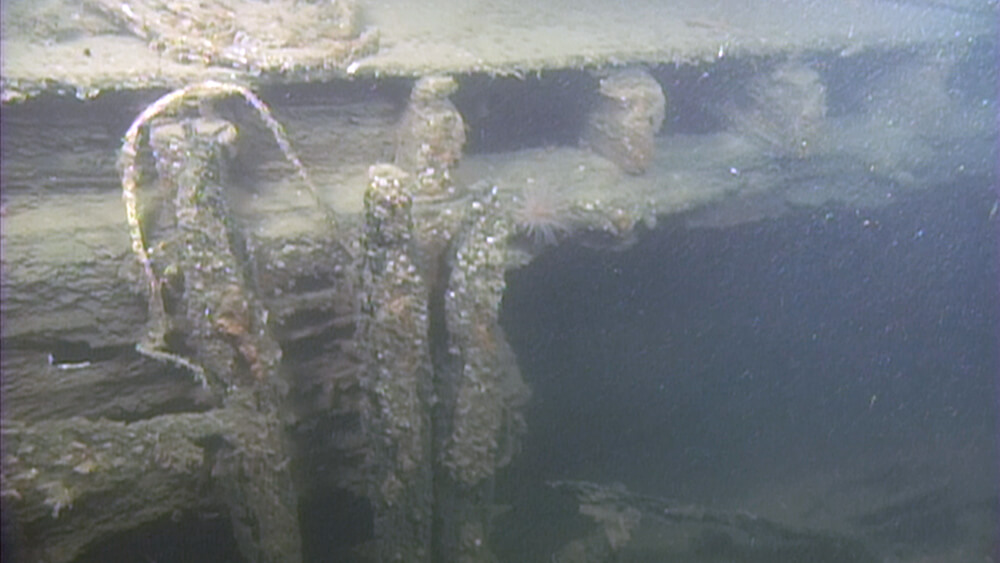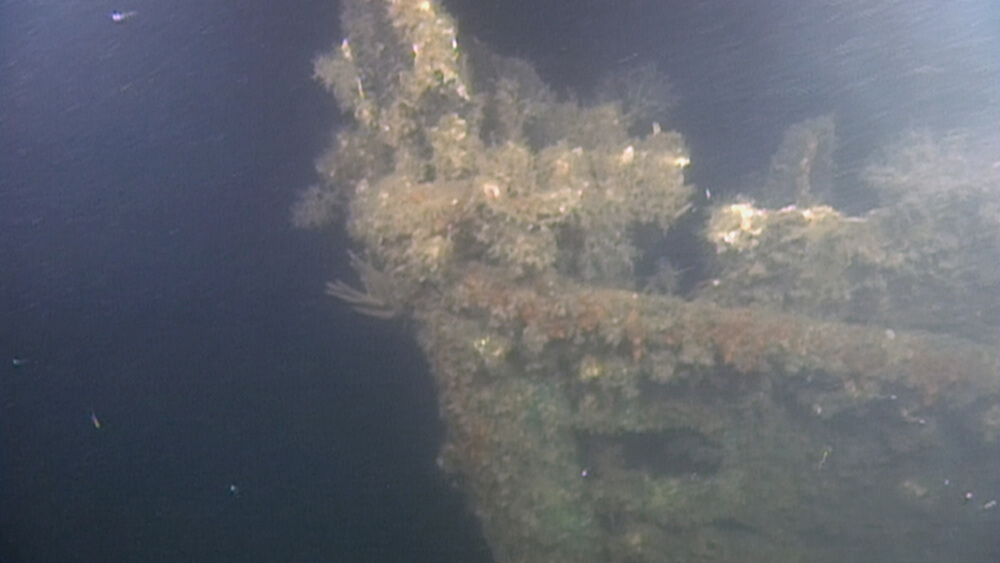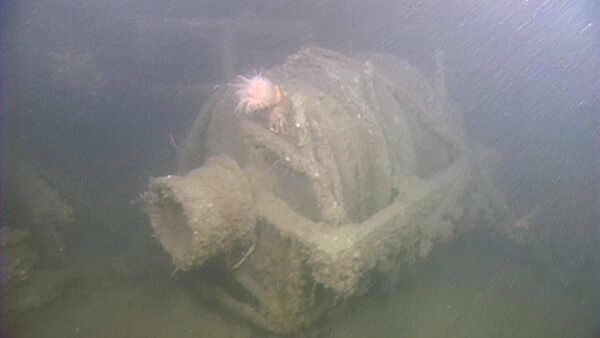Edna G
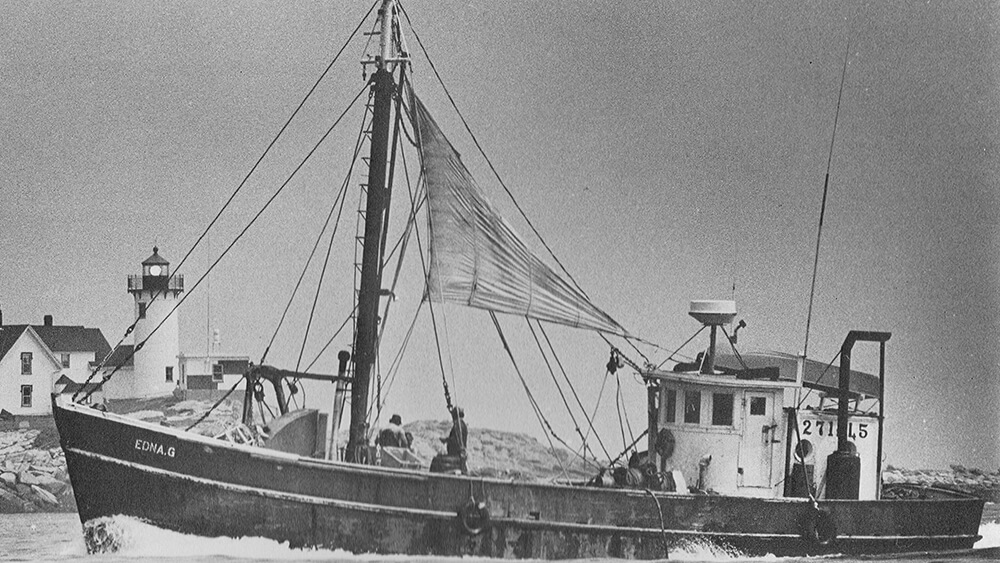
Ship Stats
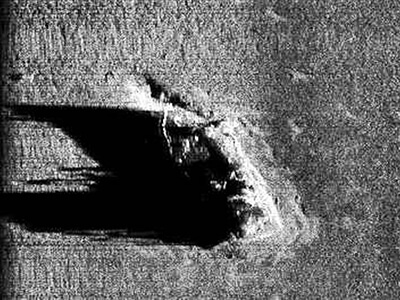
Ship Stats: Eastern-rig dragger Edna G.
Depth: over 300 feet
Length: 54 feet
Breadth: 16 feet
Depth of Hold: 6 feet
Built: 1956, wooden-hulled, engine-powered fishing vessel, Morehead City Shipbuilding Construction, North Carolina
Port of Registry: USA
Owner: Earl Holton, Pamlico Packing Company (until 1972)
Date Lost: June 30, 1988
Owner at Time of Sinking: Antonio Romeo
Crew: 2 (Captain Romeo and brother, Giuseppe Romeo)
Sunk By: Foundering due to unknown causes Survivors: 2 out of 2
Data Collected on Site: Side-scan sonar; ROV photography and video
Significance: Edna G was a wooden-hulled eastern-rig dragger that was powered by internal combustion and deployed, towed, and recovered its otter trawl net or dredge over the starboard or port side (as opposed to over the stern as done in modern trawlers). These gasoline or diesel powered vessels were a transitional design between earlier wooden sailing schooners and modern steel trawlers. It was listed on the National Register of Historic Places in 2011 due to its importance as a remarkably intact example of 20th century fishing technology.
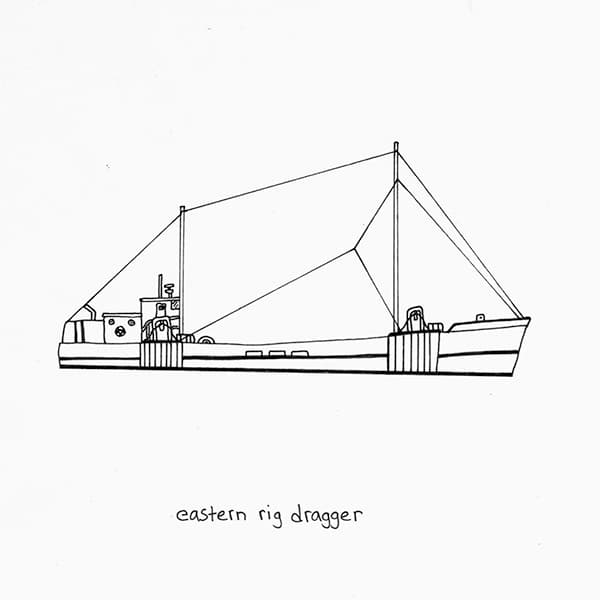
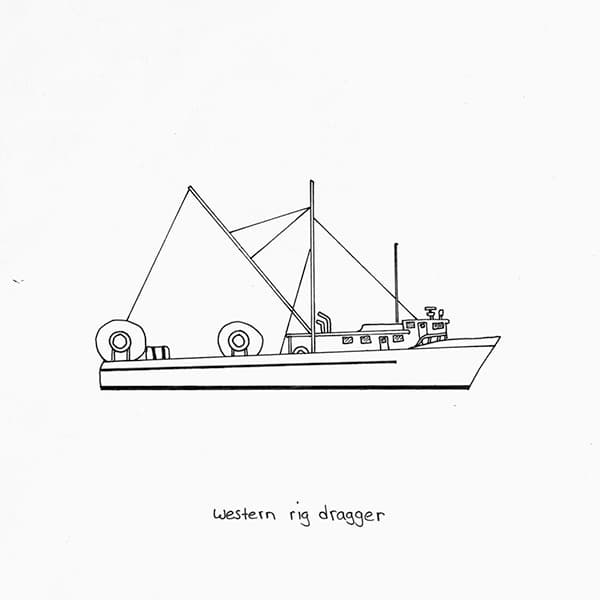
Present Day
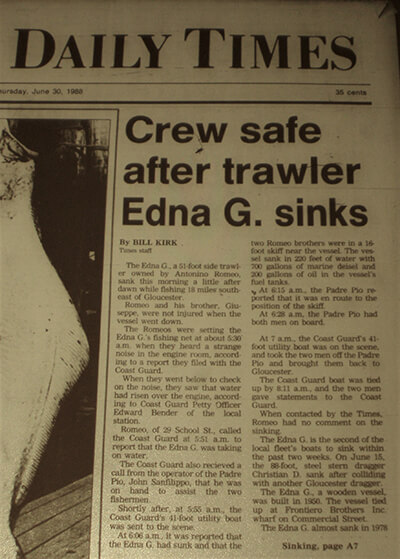 click to view full size image
click to view full size image
Edna G. sits in over 300 feet of water upright and nearly intact. Discovered in 2002, the bow faces south, with the wheelhouse and helm still in place. Four rectangular windows frame the captain's view of the deck and a radiator is still attached inside while invertebrates partially cover the white paint of the wheelhouse's outside. The double-drum trawl winch sits forward of the pilot house along the vessel's port side, orientated fore and aft, along the vessel's port side. There is a considerable quantity of fishing gear on it, including its trawl net, partially suspended by its floats. Other nets, such as gill nets, have become entangled in Edna G.'s own nets since its sinking.
Historical Background
The Morehead City Shipbuilding Corporation of Morehead City, North Carolina built Edna G in 1956. The dragger measured 54 feet long by 16 feet wide with a 6 foot depth of hold. Edna G fished down south for Earl Holton of the Pamlico Packing Company until 1972 when it moved up to Portland, Maine. Its homeport changed to Gloucester, Massachusetts in 1977. Between 1977 and its loss in 1988, the dragger fished for groundfish under captains Joseph Lochirco, Salvatore Sciortino, Pasquale Vitale, and Antonio Romeo.
Around 5:30 a.m. on June 30, 1988, Edna G.'s crew, consisting of Antonio Romeo and his brother Giuseppe, heard a strange noise in the engine room while they were deploying the trawl net. When they went below, they found the engine room filling with water. Thirty minutes later, the dragger sank, leaving the two men afloat in a dory. They were rescued by the fishing vessel Padro Pio and eventually transferred to a Coast Guard vessel which took them back to Gloucester. The cause of the sinking was never determined.
